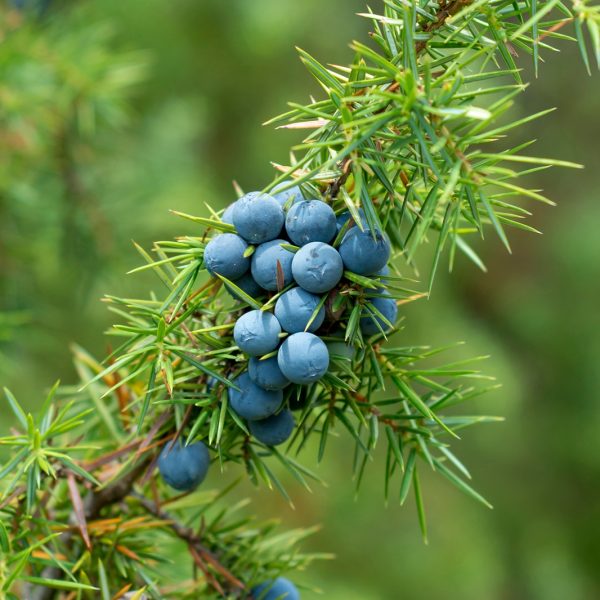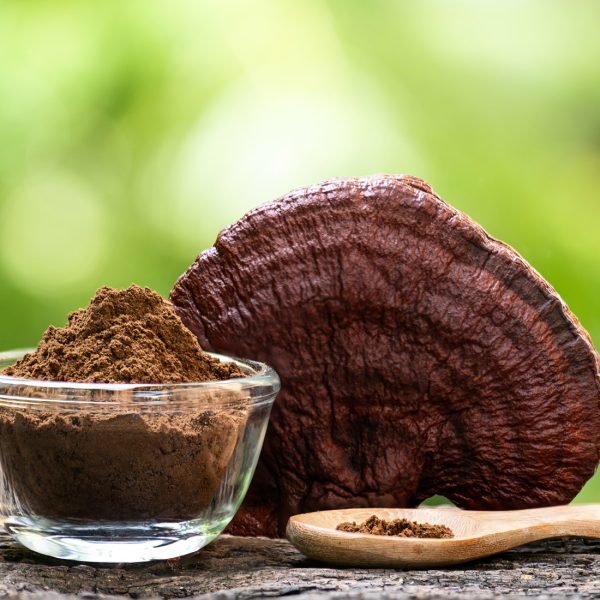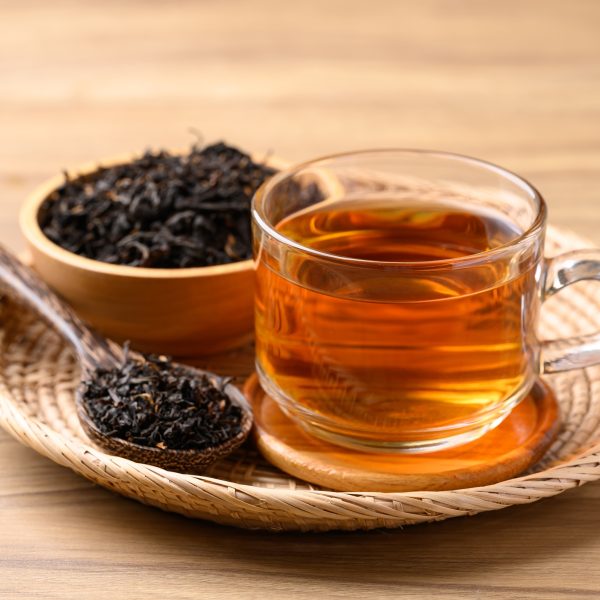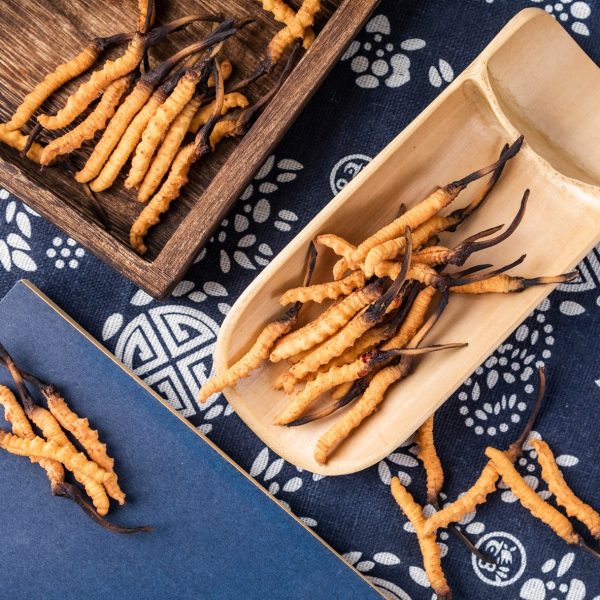Many people can go on to develop psoriatic arthritis if left untreated. This article shares some herbal treatment protocols for psoriasis.
Understanding psoriasis

Psoriasis is a non-contagious, multifactorial condition affecting the skin that often follows cycles of relapse and remission (flares). It usually occurs in young adults (18–39) or those aged 50–69, but people of all ages can be affected, males and females in equal proportion. Two percent of the global population is estimated to have the condition (1). Signalling between immune cells present in the skin goes awry due to multiple factors, leading to dysregulated skin cell (keratinocyte) growth, resulting in the characteristic plaques which will likely lead to a diagnosis of psoriasis.
Although psoriasis has been thought of as an autoimmune condition, this viewpoint is being challenged by new data that suggest skin and gut dysbiosis (reduced immune tolerance to bacteria living in and on us) is a central root cause (2). As with many conditions arising from dysbiosis, the chronic inflammation and accompanying systemic features that present with psoriasis reflect the traditional wisdom of clearing heat, damp and improving the excretory function of the body’s systems to deal with this condition.
Psoriasis, named for the Greek root word referring to ‘itch’, can significantly impact a person’s quality of life and psychological health, given the potentially visible and uncomfortable nature of the disease. The physical discomfort, easy bleeding, itching and soreness accompanying psoriasis can affect sleep, movement and other daily activities, leading to general distress. Holistic practitioners will support a person to use external symptomatic relief, targeted internal treatment and lifestyle interventions to ease their discomfort and manage the processes underlying psoriasis.
How does psoriasis work?

The skin is the human body’s largest organ, spanning roughly 2m² and carrying out a multitude of functions. Most importantly, the skin is an immunological barrier, a key excretory (helps rid the body of waste products from metabolising food and creating energy) organ, and a thermoregulator (manages the heat of the body). The three main layers of the skin, characterised by the kinds of cells and tissues present in each, are the epidermis (water-resistant surface), the dermis (contains blood vessels, sweat glands, nerve endings and hair follicles), and the subcutis (contains an insulating and hormonally-active layer of subcutaneous fat).
The plaques which arise as a result of psoriasis are made up of keratinocytes, cells in the epidermis which help keep the skin waterproof and protected. Keratinocytes are arranged in layers, and as fresh cells arise deep in the epidermis, the more mature ones are pushed upwards, flattening and eventually dying and flaking off. The time for one cell to mature all the way through the epidermis is usually around 28 days. In psoriasis, this keratinocyte cycle is drastically shortened by about 9 times to 3–4 days, leading to groups of very numerous, immature keratinocytes presenting as plaques. Given their immaturity, these cells cannot function as a true barrier anymore, meaning they bleed and break easily. The underlying inflammation, irritation, as well as potential for allergens and pathogens to enter weaker skin, can cause the plaques to be itchy, irritated and sore.
While new information is being gathered about psoriasis all the time, what is understood is that a vicious cycle of skin — and systemic — inflammation is created. Pro-inflammatory cytokines (chemical messengers released by immune cells to alter the function of other cells) in the dermis and epidermis activate dendritic cells (immune cells with protrusions, hence their name) and some types of T cells. This cell signalling cascade results in keratinocytes proliferating inappropriately, as well as the formation of new capillaries and the further recruitment of immune cells, leading to an inflammatory positive feedback loop.
Understanding the root

References to ‘the itch’, or ‘tetters’ can be found in old humoural herbals of the Western tradition, and are considered under the umbrella term ‘Kushtha’ for eroding skin conditions by Ayurveda. Traditional Chinese Medicine (TCM) describes psoriasis as being an invasion of heat and wind (3). This indicates that psoriasis is an age old ailment, however within the scientific medical community the precise process is still being elucidated (1). Psoriasis as it appears on the skin may herald widespread chronic inflammation, which has been documented to co-occur with hypertension, obesity, metabolic syndrome and inflammatory bowel disease. In the last 10 years a microbial-immunological root cause has been added to the picture which displaces the idea that psoriasis is primarily an autoimmune condition, although it is still accepted as an immune-mediated disease.
In 1995, it had been noted that psoriasis could occur following instances of ‘strep throat’, an infection of Streptococcus bacteria (4). A group of researchers posited that the skin rash could be occurring due to a similarity between a bacterial protein and one found in human keratin (present in the epidermal keratinocytes), leading human T cells (immune cells) to mistake keratinocytes for pathogens, leading to an autoimmune attack on keratinocytes (4). Two decades later in 2015, a group containing some of the original researchers published a paper updating their position, this time positing that while T cells are involved in psoriasis, it is probably not via an autoimmune pathway (2).
It is well established that psoriasis co-occurs with Crohn’s disease (CD) in a significant and reciprocal way (those with psoriasis are significantly more likely to have or develop CD, and vice versa) and that people with psoriasis are more likely to have periodontitis (inflammation of the gums usually caused by poor oral hygiene) (5). Both CD and periodontitis are inflammatory conditions caused by microbes, so researchers investigating psoriasis have delved deeper into whether the presence of, or lack of tolerance to, microbes could be at the root of psoriasis too (2). Currently, research is being published to support the idea that the bacterial skin — and gut — populations of people with psoriasis differ on average from those without the condition. Whether the presence of those bacteria leads to an inappropriate innate immune response, or whether mutations in innate immune response genes enable the dysbiotic microbiomes to arise, we’ll have to wait and see.
What we can work with is that psoriasis results from a dysregulated innate immune response affecting the cell cycle of keratinocytes. The skin and gut microbiomes of people with psoriasis have particular, distinctive characteristics (5), and this will be somewhat malleable via external and internal herbal medicines, diet and lifestyle practices. The goal is to restore balance so that the skin microbiome does not trigger a damaging inflammatory cascade. In energetic terms, we need to resolve damp and cool the system. After all, many bacterial species are commensal (offer reciprocal benefits with their human host).
This is a major shift in the paradigm, and has not yet been totally confirmed. Almost any other source you find will likely identify autoimmunity as a mechanism underlying psoriasis, but it is a topic of current debate and research. Luckily, the holistic remedies and lifestyle practices that have been used for centuries still address the root causes of psoriasis. However, modern people face additional challenges in terms of stress levels, nutritional quality of foods, social determinants of ill health, and so on. What these new data will offer, however, are additional insights into why certain traditional remedies are effective and how we can continue to expand our repertoire of holistic health practices.
Signs and symptoms

When most people think of psoriasis, they are likely imagining plaque psoriasis, which is the most common presentation. It is characterised by raised, thickened plaques with a silvery sheen and defined borders, erythema (increased blood flow which looks red on light skin and like a deepening of colour on dark skin). Plaques frequently occur symmetrically on extensor surfaces like elbows, knees and knuckles, but also the scalp, backs of the ears, sacrum and sometimes torso. Nail pitting, separation of the nail from the nailbed and thickening of the nail bed are common diagnostic features that also occur because of keratinocyte immaturity (1). The Koebner phenomenon describes when new psoriatic plaques develop at sites of skin trauma, such as due to scratching, cuts or pressure. The Auspitz sign is diagnostic and occurs when the plaque can be lifted and pinpoint bleeding occurs beneath (1).
Other, less frequent presentations include guttate psoriasis, pustular psoriasis and erythrodermic psoriasis. Guttate psoriasis accounts for around 2% of psoriasis cases and is closely associated with streptococcal infection, often resolving spontaneously after some months. Pustular psoriasis is also rare and can be triggered by reducing steroid dose, pregnancy, hypocalcaemia or infection and presents mainly on the palms and foot soles. Erythrodermic psoriasis is uncommon but can be life threatening. At least 75% of the body becomes involved, which can lead to thermal and electrolyte dysregulation. If erythrodermic psoriasis is suspected, this should be treated as a red flag and the person should be referred to their GP or emergency services, as appropriate.
Psoriatic arthritis is inflammation of the joints that occurs alongside skin psoriasis, and can have similar systemic impacts as rheumatoid arthritis. The fingers, toes and certain insertions of ligaments into bones are often inflamed and painful.
Herbal solutions
The main topical applications to prioritise are antipruritic, cytostatic (stops proliferation), trophorestorative, alterative, lymphatic, digestive, nutritive, bitter, relaxing nervine and immunomodulating.
Anti-itch herbs

Relieving the itch — often herbs that relieve itch will modulate inflammation and assist healing too — can be achieved using herbs like chickweed and marshmallow leaf (mucilaginous and moistening for a hot, dry constitution), or aromatic nervines like lavender and peppermint (in wetter constitutions and presentations).
Stopping the proliferation of keratinocytes can be carried out topically by thuja and greater celandine, but these herbs for external use are addressing a symptom rather than the root cause.
Trophorestorative herbs
Trophorestorative herbs like marigold should be prioritised topically and internally as they encourage wounds to heal and the cell cycle to be returned to a more appropriate length. Marigold is also lymphatic, which assists the body in eliminating wastes.
Alteratives
Alterative herbs like heartsease, burdock root, cleavers, Oregon grape and nettle are extremely useful in beginning to resolve the systemic damp and heat. Care should be taken with burdock root that sufficient lymphatic support, e.g. cleavers, marigold, is taken alongside otherwise the skin issue can be exacerbated.
Digestive herbs
Supporting the digestion with bitters, ideally that also have microbiome-modulating actions (think the aromatic Mediterranean herbs e.g. rosemary, sage), and that support liver function, e.g. dandelion root is essential to help resolve absorption and motility issues that may be adding to the inflammatory load.
Nutritive herbs that are highly mineral rich, e.g. cleavers, nettles, dandelion leaf, while also supporting the lymphatic system, are important as the sped up keratinocyte production requires a high mineral input, which depletes minerals for other essential processes.
Nervines
Relaxing nervines are central to a psoriasis regime because the process of living with an uncomfortable skin condition takes an emotional and psychological toll. In addition, people who feel calmer and more resourced are more likely to make time to care for themselves, creating a virtuous cycle. Nervines with additional actions relating to the above, such as German and Roman chamomile, vervain, valerian, motherwort and lemon balm are all good options that offer a range of bitter, aromatic and digestive actions (6).
Immune herbs
Immune modulation is carried out exceptionally well by mushrooms. Chaga has been researched in relation to psoriasis, and found to have significant impact on improvement and even resolution of psoriasis lesions (7). Incorporating medicinal mushrooms into your diet or herbal regime can be as simple as making a medicinal mushroom hot chocolate using good quality, reputable mushroom fruiting body powder.
Holistic solutions

To work towards resolving a complex condition like psoriasis, multiple modes of treatment need to be employed. Often, due to the psychological, social and potentially economic implications of plaque psoriasis, symptomatic relief is a priority at the beginning and may be most quickly achieved by topical applications. The constitution of the person and presentation of the psoriasis should be considered in the decision making of what form the topical application should take. For example, balms should not be applied to actively weeping, itchy, hot psoriasis because the oil based substance can trap the heat in. A lotion or aromatic water spray might be more suitable in a hot presentation because the water based mixture will be immediately cooling.
Using sprays of mixed aromatic waters (distillates of herbs) provides a quick, portable and non-greasy application that can quickly reduce itching and soreness. It has the added benefit over creams of introducing no extra microbes carried by the applying finger, which can be important in cases where lesions have become open due to itching or severity.
References
- Armstrong AW, Read C. Pathophysiology, Clinical Presentation and Treatment of Psoriasis: A review. JAMA. 2020;323(19):1945-1960.
- Fry L, Baker BS, Powles AV, Engstrand L. Psoriasis is not an autoimmune disease? Exper Derm. 2015;24(4):241-244. doi:10.1111/exd.12572.
- Tierra L. The Herbs of Life: Health & Healing Using Western & Chinese Techniques. The Crossing Press; 1992.
- Valdimarsson H, Baker BS, Jónsdóttir I, Powles A, Fry L. Psoriasis: a T-cell-mediated autoimmune disease induced by streptococcal superantigens? Immunol Today. 1995;16(3):145-9. doi: 10.1016/0167-5699(95)80132-4.
- Lejniczak-Staruch i, Ciazynska M, Sobolewska-Sztychny D, Narbutt J, Skibinska M, Lesiak A. Alterations of the Skin and Gut Microbiome in Psoriasis and Psoriatic Arthritis. Int J Mol Sci. 2021;22(3998). doi: 0.3390/ijms22083998.
- Hoffman D. Medical Herbalism: The Science and Practice of Herbal Medicine. Healing Arts Press; 2003.
- Powell M. Medicinal Mushrooms: A Clinical Guide. Mycology Press; 2014.































